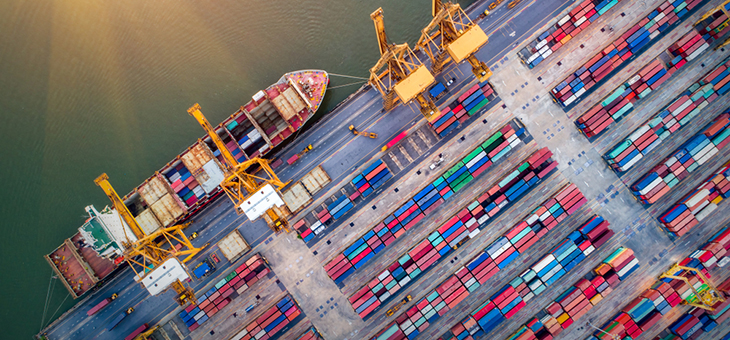Australia’s capacity to manufacture essential goods is now the lowest in the developed world, a study has found. And the consequences, magnified during the pandemic, limit our ability to survive in a crisis.
The advent of World War I was the first time governments realised the country had become reliant on imports, as supply lines around the world shut down. Home-grown manufacturing boomed soon after, and within a few years everything from steel to cars to textiles and food were made right here in Australia.
Manufacturing in Australia peaked in the 1960s at 25 per cent of gross domestic product (GDP). That number has since dropped significantly, to about 5 per cent. In the 1960s, the manufacturing sector employed 28 per cent of the labour force. Today that number is just 5.4 per cent.
Read: Our supply chain is strong but medicine imports the ‘weakest link’
What little is left of manufacturing is focused on three key areas – food processing, textiles and fabrics, and chemical products. Until recently, you could have included automotive manufacturing on that list as well, until the closure of the last Toyota and Holden plants in 2017.
The pandemic has crippled international supply chains, highlighting our dependence on other nations.
Australia has ignored its manufacturing capabilities to such an extent that we now have the lowest level of self-sufficiency of any OECD country, according to a Flinders University report.
The report, commissioned by the Australian Sovereign Capability Alliance (ACSA), a thinktank dedicated to re-establishing domestic manufacturing, says Australia is unable to independently meet its own essential needs in health, energy and infrastructure, defence and space, science, communications and technology and advanced manufacturing.
“We have become dependent on everything that we need to survive in an emergency coming in from overseas,” says ASCA director Martin Hamilton-Smith.
“That means we could be cut off. We saw that happen during the pandemic when we had trouble getting masks, sanitiser, respirators and pharmaceuticals because other national governments said we are not letting you have those things that are manufactured in our countries.
Read: We must understand murky supply chains
“There are things that we need to be able to do as a nation and make here in Australia in order to survive a crisis … What’s clear is that at the moment there are important gaps, and that leaves all Australians exposed and very vulnerable.”
The answer, says Mr Hamilton-Smith, is a much greater level of government investment in Australia’s manufacturing base. We also need a dedicated federal minister for sovereign manufacturing capability and a clear plan to get the nation’s manufacturing back on track.
“The answer won’t always be to manufacture in Australia … We either need to be able to manufacture it here or we need to be able to store it here. The important thing is we need control over those essential things we need to survive a crisis.”
Read: Is Australia’s food supply secure?
In June, the government acknowledged the country’s vulnerability and launched the Modern Manufacturing Strategy. Grants of between $50,000 and $2 million are being offered to businesses that can fill manufacturing gaps identified by the plan.
Then federal minister for industry, science and technology Christian Porter said: “Not only is this initiative important to strengthening our ability to access critical products for the health and wellbeing of Australians, it’s also helping grow Australian manufacturing and create new jobs for generations to come.”
Do you think Australia needs to be more self-sufficient? Were we ‘found out’ because of the pandemic? Why not share your thoughts in the comments section below?
If you enjoy our content, don’t keep it to yourself. Share our free eNews with your friends and encourage them to sign up.

